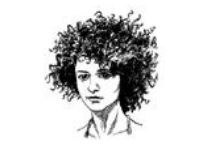In the wordless film Squeeze by Mika Rottenberg, a factory is abuzz with activity: workers spritz wiggling tongues with water, conduct electricity through meditation, harvest rubber trees, transcend space and time, and endlessly chop heads of lettuce. All this happens, it seems, to produce a cube of worthless, rotting trash.
The product is beside the point, but the process of its creation—the art of its labor—is a phantasmagorical spectacle. Repetitive tasks, the transformation of work into physical objects: these are the elements of Mika Rottenberg’s surreal, industrial films: Mary’s Cherries, Cheese, Tropical Breeze, and the recent performance-film combo Seven. In watching her films, viewers follow strange interlocking chains of logic until, every so often, a magical hiccup allows for a moment of the impossible.
The actors in Rottenberg’s films are laborers. They don’t act, per se, but carry out series of simple, physical tasks. For this reason, she casts individuals who use their bodies as sites of extreme production—bodybuilders, the highly flexible, the very long-haired. Most of her actors are women and her work is often seen through a feminist lens, though its preoccupations are wider than feminist ideology, from Marxism to fetishism.
Rottenberg’s films show in galleries and museums (Bilbao Guggenheim, the Whitney Biennial, Nicole Klagsbrun, Andrea Rosen) but not in theaters, an environment she considers inappropriate for her current work. Often she builds an installation to serve as a viewing room, its atmosphere and structure mirroring the film it houses. Some viewers wander in and out as the projections loop continuously, and others find themselves hypnotized by the artist’s circuitous logic, from beginning to end.
—Ross Simonini
I. BEHIND THE SCENES OF REALITY
THE BELIEVER: For you, what’s the distinction between an art film shown in a gallery and a cinematic film screened in a theater?
MIKA ROTTENBERG: The most immediate thing that comes to mind is the whole ritual of going to the movies. You’re going from the ugly “real world,” and suddenly everything transforms: the carpet is brighter, the lights are brighter, the popcorn machine. You are being prepared to enter a different reality. In the gallery, it’s more straight-up reality; you are not asked to forget about your physical body. In the film theater, you are asked to escape.
BLVR: You often make spaces, little sculptural houses for your films to be seen within the galleries. Is that a form of escape?
MR: They’re video installations—I build my own “mini theaters” for most of my videos. I think about it as taking advantage of the fact I can control the shape and architecture of where my videos are being screened, making the way you experience...
You have reached your article limit
Sign up for a digital subscription and continue reading all new issues, plus our entire archives, for just $1.50/month.
Already a subscriber? Sign in





